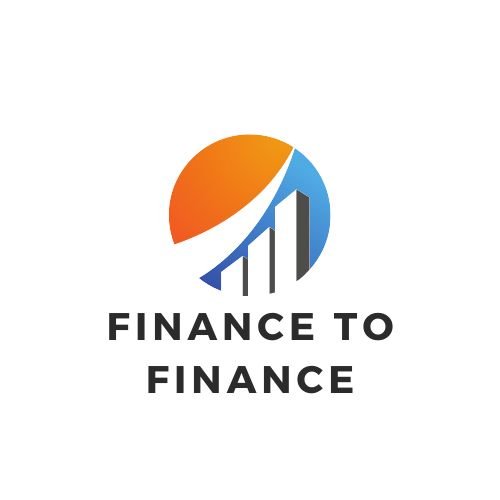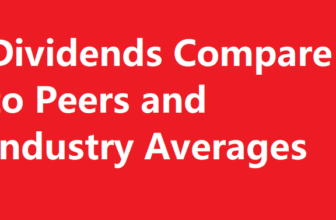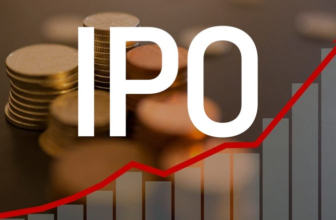
Investing in HDFC Bank: Analyzing the Bank’s Share Price Potential
HDFC Bank is one of India’s largest private sector banks, with a market capitalization of over $120 billion. As with any publicly traded company, the bank’s share price is subject to fluctuations in response to a variety of factors, including economic conditions, industry trends, and company performance. In this context, determining a share price target for HDFC Bank can be a valuable exercise for investors and analysts alike. In this article, we will explore the factors that impact HDFC Bank’s share price, examine the current status and future outlook of the bank, and analyze potential risks and opportunities for investors. Additionally, we will review the latest share price targets from analysts and forecasters, and provide our own insights and recommendations for those considering an investment in HDFC Bank.
HDFC Bank Overview
HDFC Bank was established in 1994 as a subsidiary of Housing Development Finance Corporation Limited (HDFC), one of India’s leading housing finance companies. Today, the bank has a nationwide presence with over 5,500 branches and 16,000 ATMs across 2,900 cities and towns. HDFC Bank offers a wide range of financial products and services, including personal banking, corporate banking, and treasury operations.
In terms of financial performance, HDFC Bank has a strong track record of growth and profitability. For the fiscal year 2020-2021, the bank reported a net profit of INR 31,116 crore (approximately $4.2 billion USD) on total assets of INR 16.9 trillion (approximately $227 billion USD). HDFC Bank has consistently outperformed its peers in terms of profitability and return on assets, with a 5-year average return on assets of 1.9%.
Looking ahead, HDFC Bank is well-positioned for continued growth and success. The bank has a strong balance sheet with healthy capitalization levels and a diversified loan portfolio. HDFC Bank has also made significant investments in digital technologies to enhance the customer experience and drive operational efficiencies. Overall, the bank’s long-term growth prospects appear favorable, which could support a positive outlook for the bank’s share price.
Factors Affecting HDFC Bank Share Price
Several factors can impact the share price of HDFC Bank, including:
- Economic conditions: HDFC Bank’s share price is influenced by the overall economic conditions in India and globally. Factors such as GDP growth, inflation, interest rates, and currency fluctuations can all impact the bank’s profitability and therefore its share price.
- Industry trends: HDFC Bank operates in the highly competitive Indian banking sector, and the bank’s share price is affected by trends in the industry. For example, changes in regulations, shifts in consumer preferences, and advancements in technology can all impact the bank’s performance and share price.
- Company performance: The bank’s financial performance and strategic initiatives can have a significant impact on its share price. Factors such as loan growth, asset quality, and profitability all play a role in determining the bank’s valuation.
Note: It is important for investors to stay up-to-date on these factors and their potential impact on HDFC Bank’s share price. By monitoring economic and industry trends, as well as the bank’s financial performance, investors can make informed decisions about whether to invest in HDFC Bank and what price target to set.
Analysis of HDFC Bank Share Price Target
To determine a share price target for HDFC Bank, analysts typically consider a variety of factors, including the bank’s financial performance, economic conditions, and industry trends. Here are a few key aspects of the analysis that can help in setting a price target:
- Analyst recommendations: Analysts who cover HDFC Bank typically provide recommendations on whether to buy, hold, or sell the stock. These recommendations are based on a range of factors, including the bank’s financial performance, industry trends, and macroeconomic conditions. Investors can use these recommendations as a starting point for setting their own price target.
- Price forecasts: Analysts also provide price forecasts for HDFC Bank based on their analysis of the bank’s financial performance, industry trends, and economic conditions. These forecasts can help investors understand the potential future performance of the stock and set a price target accordingly.
- Technical analysis: Technical analysis is another tool that analysts use to set a price target for HDFC Bank. This analysis involves looking at the stock’s historical price movements, as well as various technical indicators such as moving averages, to identify trends and patterns that can be used to predict future price movements.
Based on these factors, analysts currently have a generally positive outlook on HDFC Bank’s share price. The bank’s strong financial performance, market leadership position, and robust digital capabilities are seen as key drivers of future growth. As of the time of writing, the consensus price target for HDFC Bank is around INR 1,800 (approximately $24 USD) per share, which represents a potential upside of around 15% from the current share price.
Risks and Opportunities
While there are several factors that could drive HDFC Bank’s share price higher, there are also some risks and challenges that investors should be aware of:
- Economic uncertainties: The ongoing COVID-19 pandemic and associated economic challenges have created significant uncertainties for businesses, including HDFC Bank. The bank’s share price could be negatively impacted by a prolonged economic downturn or a slowdown in GDP growth.
- Regulatory risks: As a leading player in the Indian banking sector, HDFC Bank is subject to a range of regulations that could impact its profitability and share price. Changes in regulations related to lending practices, interest rates, or capital requirements could have a significant impact on the bank’s operations and financial performance.
- Competitive pressures: HDFC Bank operates in a highly competitive industry, and the bank’s share price could be impacted by increasing competition from other players in the market. In addition, the bank faces increased competition from digital-only banks and fintech companies, which could disrupt the traditional banking model and impact the bank’s profitability.
Despite these risks, HDFC Bank also has several opportunities that could drive future growth and support a positive outlook for the bank’s share price, including:
- Digital transformation: HDFC Bank has made significant investments in digital technologies to enhance the customer experience and drive operational efficiencies. The bank’s strong digital capabilities could help it capture new customers and retain existing ones, supporting future growth.
- Continued loan growth: HDFC Bank has a diversified loan portfolio and has demonstrated strong loan growth in recent years. This growth could continue as the Indian economy recovers from the pandemic and demand for credit increases.
- Favourable demographic trends: India’s large and growing middle class represents a significant opportunity for HDFC Bank. As more individuals enter the middle class and seek financial products and services, the bank could capture a larger share of the market, supporting future growth.
Note: Investors should carefully weigh the risks and opportunities when setting a price target for HDFC Bank’s share price. While there are risks to be aware of, the bank’s strong financial performance and digital capabilities position it well for continued growth and success in the long run.
Conclusion
HDFC Bank is one of the leading players in the Indian banking sector, with a strong track record of financial performance and a robust digital strategy. While there are risks to be aware of, such as economic uncertainties and regulatory risks, the bank’s strong growth prospects and digital capabilities make it an attractive investment opportunity for many investors.
Analysts currently have a positive outlook on HDFC Bank’s share price, with a consensus price target of around INR 1,800 (approximately $24 USD) per share, which represents a potential upside of around 15% from the current share price. However, investors should carefully consider their own risk tolerance and investment goals when setting a price target for HDFC Bank’s share price.
HDFC Bank’s strong financial performance, market leadership position, and robust digital capabilities position it well for continued success in the long run. With a focus on innovation and customer experience, the bank is well-positioned to capture new opportunities and drive growth in the years to come.





